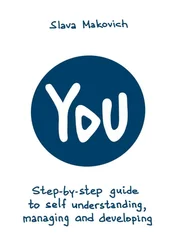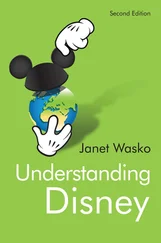There is also a broader point here: To say that something is adaptive is merely to say that it has evolutionary consequences in favor of gene replication. It is a description of a natural process of change over time. But as a description, should it bleed into moral reasoning? Evidence of an adaptation is not evidence of a moral (or even a “health”) imperative. To think otherwise is in a certain sense to fall victim to the naturalistic fallacy, a reasoning error that assumes that what is natural must also be good or right. There are, of course, many examples of natural processes that most people would not consider to be at all good or right or healthy. HIV/AIDS and murder are two examples. But there is also no inherent moral superiority in one set of genes over another merely on the basis that one set replicates itself more frequently than another. They are merely chemicals, after all, whether they replicate themselves or not.
The brain might deceive us into thinking there is some inherent “rightness” in the replication of our genes. If so, however, this is a con job. Our genes create brain structures that give us emotions and tendencies that in turn tell us that certain things are more right than others. But is this so? Can we truly have an “objective” sense of rightness and wrongness related to reproduction that is independent of the whisperings of our genes?
We can also frame moral and health questions in different ways to show that their relevance and their answers are specific to context, time, and culture. For example, in modern society, one might pose this moral and health question: Is it right and healthy to add more humans to a planet already suffering from overpopulation? I imagine that this question would not have been posed, say, one hundred years ago, or, if it were, it probably would have prompted a different answer. In short, is there any ultimate truth, significance, or rightness to the replication of human DNA?
To summarize, an evolutionary perspective does not necessarily imply that asexuality is a disorder. But would asexuality be considered “pathological” from any other perspectives? Let’s consider a number of these other perspectives (Bogaert, 2006b).
First, should asexual people be considered disordered and/or abnormal because they constitute a small minority and thus are statistically rare in the population? After all, to be abnormal is to deviate from the norm. If you think about it, I expect you will see that this is a poor criterion for pathology, because being a statistical rarity can be easily construed as positive and life enhancing in certain domains (e.g., exceptional musical talent, as mentioned earlier).
In modern medicine and psychology, individuals are not typically diagnosed with a (mental) pathology or dysfunction unless they experience “marked distress or interpersonal difficulty” ( DSM-IV-TR ) (American Psychiatric Association, 2000, p. 539). [33] Note that the most important reference/source for understanding and diagnosing mental disorders in North America is the Diagnostic and Statistical Manual of Mental Disorders ( DSM ). Clinicians view it as their “bible.”
For example, the most common type of disorder that asexual people may be diagnosed with is hypoactive sexual desire disorder, which is characterized by a marked lack of desire for sex, accompanied by, as mentioned, distress or interpersonal difficulty.
Currently, we have only a modest amount of data on the mental health of asexual people, so definitive conclusions about distress or other psychological disturbance issues in this group await future research. However, the research to date does not suggest that asexual people, as a whole, are distressed by their lack of sexual interest. Psychologists Nicole Prause and Cynthia Graham, and Lori Brotto and colleagues, found no evidence that self-identified asexuals were distressed by their asexuality (Prause & Graham, 2007; Brotto, Knudson, Inskip, Rhodes, & Erskine, 2010). For example, one participant in the Prause and Graham (2007) study reported, “I’m not worried about it or I’m not concerned about it…. My life is interesting enough and it’s not really, um, a necessity” (p. 346).
Related research suggests that a high percentage of people (as many as 40 percent) in the United States report being very or extremely happy even if they have not had sex in the last year (Laumann, Gagnon, Michael, & Michaels, 1994). Of course, many of these people would not define themselves as asexuals or be defined as asexual using a common definition (i.e., enduring lack of sexual attraction). However, these results do indicate that a lack of sexuality, at least broadly defined, is not necessarily a reliable indicator of mental health or happiness. In addition, even if new research finds that some asexual people do have, on average, elevated rates of distress or other mental health issues, what would this actually mean? Well, let’s consider some related research on other sexual minorities.
Elevated distress and mental health issues have been found in some gays and lesbians (Meyer, 2003). Does this mean that being gay or lesbian is a disorder? No. There is, for example, other evidence that many gays and lesbians are also happy, content, and free from serious mental health issues (Busseri, Willoughby, Chalmers, & Bogaert, 2006; Diamond, 2003a). Moreover, from a modern medical or psychological perspective (e.g., in the DSM ), homosexuality is not viewed as pathological. So, even if some gays and lesbians do have an elevated level of distress or other mental health issues, this fact should not be used to pathologize all gays and lesbians or homosexuality in general. Similarly, if future research shows that asexual people do have an elevated level of distress or other mental health issue, this fact should not be used to pathologize all asexuals or asexuality in general.
Another important issue to consider is the source of the distress. Should we pathologize someone for feeling distressed because they do not fit in with the larger group or because the majority of people do not like them? Or, alternatively, should we pathologize the society itself for not tolerating minorities and diversity? In sum, there are several arguments against using distress (e.g., lack of evidence of increased distress, questions about the source of any distress that does exist) as a basis for pathologizing asexuality.
The second criterion often used to diagnose a mental disorder is interpersonal difficulty. Thus, should we consider asexual people disordered because they lack an important interpersonal dimension—sexuality? Again, not necessarily. Interpersonal relations do not only include sex. There are many aspects of social relations beyond sexuality, in which asexual people may function normally; that is, similarly to the majority of other people. Indeed, a sexual dysfunction is only diagnosed in modern medicine and psychology (e.g., in the DSM ) if it has an effect on interpersonal relations beyond the specific sexual domain that is of issue. So, for asexual people, a lack of sexual interest is not per se a criterion for having a disorder, unless it causes other interpersonal issues. And, of course, celibates (e.g., nuns), by choice, never have sex with others and are not considered to have a pathology by modern medicine and psychology. Similarly, it does not make sense to pathologize asexual people, who by their natures lack sexual interest and attraction, for not engaging in sex with others.
But how about other (nonsexual) aspects of interpersonal relations—do asexual people have a broad level of interpersonal impairment beyond sexuality? [34] This is assuming, of course, that we can agree on the definition of an interpersonal impairment.
There is evidence that some asexual people may have an elevated level of atypical interpersonal functioning, such as increased social withdrawal (Brotto et al., 2010), but even if additional research bears this out, this, again, does not necessarily mean that we should pathologize all asexual people or asexuality in general.
Читать дальше












